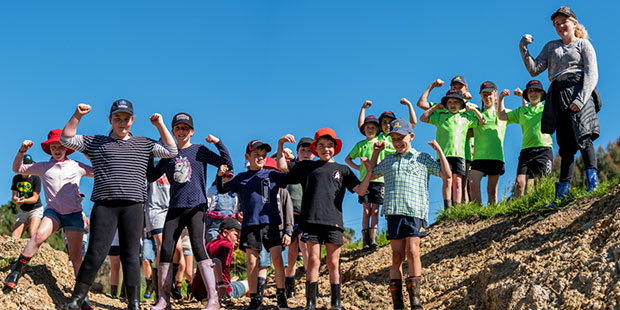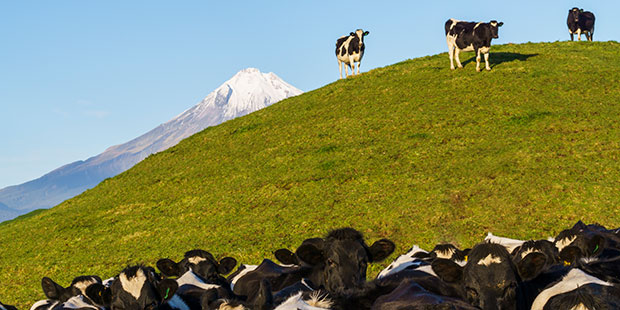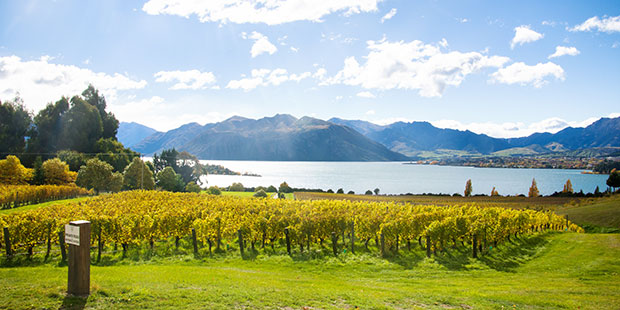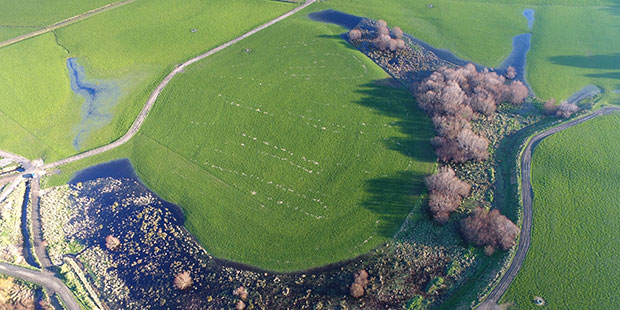$10m sunk into water quality
Huge Taranaki programme will see 1 million plants to boost water quality - and create new jobs.


Water quality improvements in rivers and streams already seen from a long-running Taranaki Regional Council planting programme should be boosted further when almost a million more native plants go into the ground next winter.
Over 600km of streams and rivers are set to be planted in 2021, double that previously planned – and there’s already been strong interest from the region’s farmers aiming to take advantage of a $5 million government injection into the Transforming Taranaki riparian management programme, says council land services manager, Don Shearman.

Photo / Supplied.
Photo / Supplied.
The funding will come from the Public Waterways and Ecosystem Restoration Fund, administered by the Ministry for the Environment (MfE), as part of the government's wider Jobs for Nature Programme, included in its Covid-19 recovery package.
It will enable eligible farmers in the intensively farmed zone of the Taranaki ring plain and coastal marine terraces to buy native plants for $1 each, with the cost of planting by contractors also covered. With fences needing to be erected to protect the new plantings likely to be worth $4.1m, the combined value of planting and fencing will be more than $10m.
The council scheme, which has been running for 27 years, previously relied on farmers voluntarily planting and fencing waterways. Over that time, council officers have prepared nearly 3000 individual riparian plans with more than 6.2m plants going in.
Shearman said dairy farmers were very much the focus of the plans and planting, making up almost all of the landowners involved. They had put in a lot of hard work – as they knew it was the right thing to do even though some needed to carry out more fencing and planting to complete what was laid out in their plans.
“This time with the new planting funding they’ll be getting the job finished,” he says. “We’re hoping to have all these streams fenced and planted over the next few years.”
Eligible farmers can order between 500 and 2000 plants for each of their riparian plans – and Shearman said environmental benefits were already being seen from the programme, with more expected to follow.
A National Institute of Water and Atmospheric Science (NIWA) study released in 2018 found many Taranaki sites had the best water quality experienced since 1995. It found the riparian protection programme was not only strongly associated with improved ecological health in the region’s waterways, but had also reduced E. coli levels.
At that stage 99.5 per cent of Taranaki dairy farms had riparian plans in place and plan holders had fenced over 84 per cent of all ring plain waterways and planted around 70 per cent.

Photo / Supplied.
Photo / Supplied.
Stream health was measured by macroinvertebrate numbers and recreation values by E. coli concentrations, with three different “restoration indices” developed to represent the amount and ecological effects of riparian restoration. The first was based on the amount of upstream banks which were fenced and/or planted, the second weighted that by the age and type of restoration and the third predicted the shading effect of vegetation in relation to stream width.
E. coli levels dropped as increasing restoration took place, with the study saying that degradation of waterways usually took place at a catchment scale, often in conjunction with land use changes. However, when restoration was carried out at the landscape scale (at district or area level), benefits were found in downstream water quality and for communities.
Shearman said he hoped there had been further improvements in environmental benefits from the programme since the study was done; more would be shown in the future.
“The more streams that are fenced off, the less sedimentation there is,” he says. As plantings grew higher, there was more shading of streams, improving water quality and increasing biodiversity by providing habitat for native birds and cover for aquatic species.
Some quite intensive state-of-the-environment monitoring had been carried out in Taranaki catchments: “But the beauty of the NIWA study is that it’s on a landscape scale,” Shearman says.
To be fair to proactive farmers close to completing riparian planting plans, they would be prioritised for 2021’s planting so they didn’t miss out.

Photo / Supplied.
Photo / Supplied.
Over the last two years, the council had received MfE freshwater improvement funding which helped farmers with the cost of infill planting and maintenance of what was already in the ground.
This year’s planting is expected to create about 80 new jobs with tenders for that work closed off on November 11. The tender to grow the 900,000 plants required has already been let, covering a range of 20 to 30 primary coloniser species as well as secondary successor plants. Pre-planting preparation of selected sites will be carried out through next February and March.





